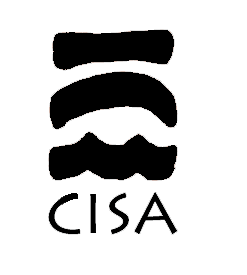INFLUENCE OF IMPURITY ELEMENTS ON THE CASTABILITY OF RECYCLED 6XXX SERIES AL ALLOYS
- Available online in Detritus - Volume 32 - September 2025
- Pages 67-73
Access restricted to subscribed members only
Released under All rights reserved
Copyright: © 2025 CISA Publisher
Abstract
Hot tearing represents a relevant limitation to castability, particularly in wrought aluminum alloys having a wide solidification range. To assess the alloy’s vulnerability to hot tearing, a variety of predictive models and testing methodologies have been developed. This study aims to validate the Kou model through the comparison of experimental data obtained using the Constrained Rod Casting (CRC) test on selected 6XXX series Al alloys. Additionally, the investigations explore the influence of microstructural features and phase constituents on the formation of hot tears. The results indicate that the sensitivity to hot tears is higher in alloys with 0.2 wt% Fe and decreases by increasing iron content. The α-Al15(Fe,Mn)3Si2 phase appears to promote grain coalescence, facilitating bridging between primary dendrites and, thereby, improving the castability of the alloy. Furthermore, the study suggests that thermodynamic simulation and the application of Kou index can offer valuable insights into the casting of alloys. These findings will contribute to the identification of optimized alloy chemistries suitable for producing near-net-shape components using casting techniques traditionally applied to Al casting.Keywords
Editorial History
- Received: 24 Jun 2025
- Accepted: 29 Jul 2025
- Available online: 16 Sep 2025
References
Andersson, J., Helander, T., Höglund, L., Shi, P., & Sundman, B. (2002). Thermo-Calc and DICTRA, Computational Tools for Materials Science. Calphad, 26(2), 273-312.
DOI 10.1016/S0364-5916(02)00037-8
Cao, G., & Kou, S. (2006). Hot Craking of Binary Mg-Al Alloy Castings. Materials Science and Engineering A, 417, 230-238.
DOI 10.1016/j.msea.2005.10.050
Clyne, T., & Davies, G. (1975). A Quantitative Solidification Test for Casting and an Evaluation of Cracking in Aluminium-Magnesium Alloys. The British Foundrymen, 68, 238-244
Cui, J., & Roven, H. (2010). Recycling of automotive aluminum. Transactions of nonferrous metals society of China, 2057-2063.
DOI 10.1016/S1003-6326(09)60417-9
D’Errico, F., & Mattavelli, D. (2017). Secondary Aluminum Alloys Processed by Semisolid Process for Automotive Application. The Minerals, Metals & Materials Society, 227-234
DOI 10.1007/978-3-319-51541-0
Dhale, A., & StJohn, D. (1998). Rheological Behaviour of the Mushy Zone and its Effect on the Formation of Casting Defects During Solidification. Acta Materialia, 47, 31-41.
DOI 10.1016/S1359-6454(98)00342-5
Eskin, D., Suytno, & Katgerman, L. (2004). Mechanical properties in the semi-solid state and hot tearing of aluminium alloys. Progress in Materials Science, 629-711.
DOI 10.1016/S0079-6425(03)00037-9
Ferro, P., & Bonollo, F. (2023). Lightweight design versus raw materials criticalities. Sustainable Materials and Technologies, 35, e00543.
DOI 10.1016/j.susmat.2022.e00543
Giansante, E., Timelli, G., & Fabrizi, A. (2024). Impact of Chemical Composition on Hot Tearing in Secondary Wrought Aluminum Alloys. Detritus, 29, 98-102.
DOI 10.31025/2611-4135/2024.19432
Giansante, E., Timelli, G., & Fabrizi, A. (2024). Influence of Chemical Composition on the Hot Tearing Susceptibility of Wrought 6005 Aluminum Alloys. Conference Proceedings- Metal 2024. Brno.
DOI 10.37904/metal.2024.4903
Graf, A. (2021). Chapter 3 - Aluminum alloys for lightweight automotive structures. In P. Mallick, Materials, Design and Manufacturing for Lightweight Vehicles (pp. 97-123). Elsevier Ltd.
DOI 10.1016/B978-0-12-818712-8.00003-3
Kou, S. (2015). A criterion for cracking during solidification. Acta Materialia, 88, 366-374.
DOI 10.1016/j.actamat.2015.01.034
Liang, K.-y., Huang, H.-C., Tseng, C.-Y., Chen, M.-C., Lee, S.-L., Lin, C.-C., & Su, T.-C. (2024). Effect of Fe, Si,Cu, and TiB2 Grain Refiner Amounts on the Hot Tearing Susceptibility of 5083, 6061, and 7075 Aluminum Ingots. Metals, 14(1).
DOI 10.3390/met14010015
Lin , S. (1999). A study of hot tearing in wrought aluminium alloys. Universitè du Québec à Chicoutimi. https://constellation.uqac.ca/id/eprint/1014/1/11716435.pdf
Phillion, A., Thompson, S., Crockcroft, S., & Wells, M. (2008). Tensile properties of as-cast aluminum alloys AA3104, AA6111 and CA31218 at above solidus temperatures. Materials Science and Engineering A, 497, 388-394.
DOI 10.1016/j.msea.2008.07.027
Polmear, I., StJohn, D., Nie, J.-F., & Quian, M. (2017). Light Alloys: Metallurgy of the Light Metals. Butterworth-Heinemann. ISBN: 008099430X, 9780080994307
Poznak, A., Freiberg, D., & Sanders, P. (2018). Chapter 10 - Automotive Wrought Aluminium Alloys. In Foundamentals of Aluminium Metallurgy_Recent Advances (pp. 333-386). Woodhead Publishing.
DOI 10.1016/B978-0-08-102063-0.00010-2
Raabe, D., Ponge, D., Uggowitzer, P., Roscher, M., Paolantonio, M., Liu, C., . . . Pogatscher, S. (2022). Making sustainable aluminum by recycling scrap: The science of “dirty” alloys. Progress in Materials Science, 128.
DOI 10.1016/j.pmatsci.2022.100947
Rajagukguk, K., Suyitno, S., Saptoadi, H., Kusumaningtyas, I., Aritvianto, B., Agus Salim, U., . . . Katgerman, L. (2024). Evaluation of Horizontal and Vertical Constrained Rod Casting Mold on Hot Tearing Susceptibility of Al-Cu Alloys. International Journal of Metalcasting, 18, 3329-3341.
DOI 10.1007/s40962-023-01250-z
Rappaz, M., Drezet, J.-M., & Gremaud, M. (1999). A new hot tearing criterion. Metallurgical and Materials Transactions A, 30A, 449-455.
DOI 10.1007/s11661-999-0334-z
Scheil, E. (1942). Bemerkungen zur schichtkristallbildung. International Journal of Materials Research, 34(3), 70-72
TCAL7 Technical Information. (2020, 4 12). Retrieved 6 27, 2024, from https://www.engineering-eye.com/THERMOCALC/details/db/pdf/thermo-calc/02/TCAL7_technical_info.pdf
Uludag, M., Çetin, R., Dispinar , D., & Tiryakioglu, M. (2018). The effects of degassing, grain refinement & Sr-addition on melt quality-hot tear sensitivity relationship in cast A380 aluminum alloy. Engineering Failure Analysis, 90, 90-102.
DOI 10.1016/j.engfailanal.2018.03.025
Van den Eynde, S., Bracquen, E., Diaz-Romero, D., Zaplana, I., Engelen, B., Duflow, J. R., & Peters, J. R. (2022). Forecasting global aluminium flows to demonstrate the need for improved sorting and recycling methods. Waste Management(137), 231-240.
DOI 10.1016/j.wasman.2021.11.019



